I was invited for a blogger gathering at the invitation of Amrut Distilleries, makers of the renowned Amrut Single Malt whisky. I had heard of the brand, but never knew much about it nor had I ever tasted it. It’s not easy to find it in liquor stores and I think I have seen their whiskys more at airport duty frees. Amrut XXX rum on the other hand, that’s far more common. None the less, we were asked to come for a tasting session to be held at The Glass House on Lavelle Road.
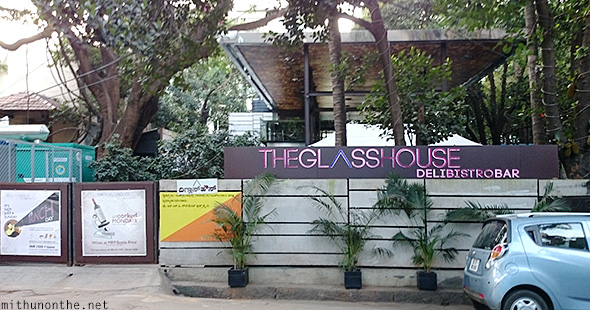
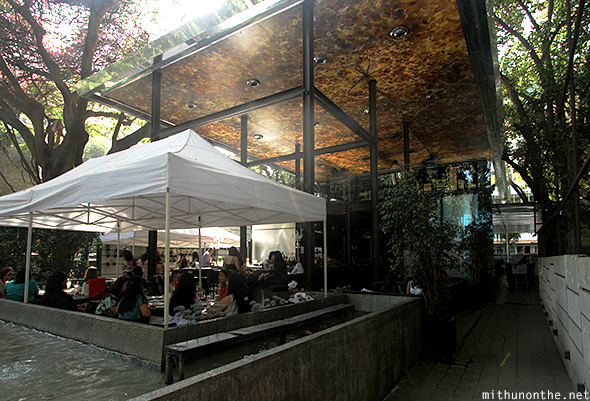
We were instructed to first go upstairs for the Amrut event.
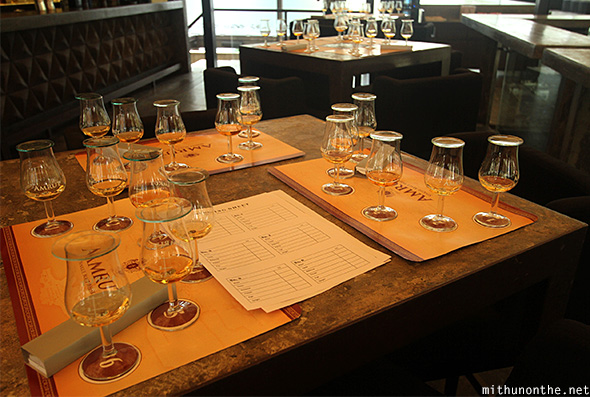

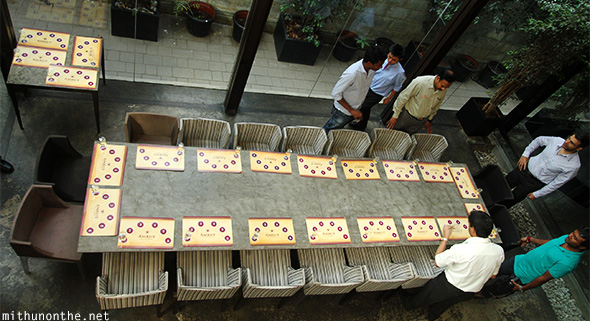
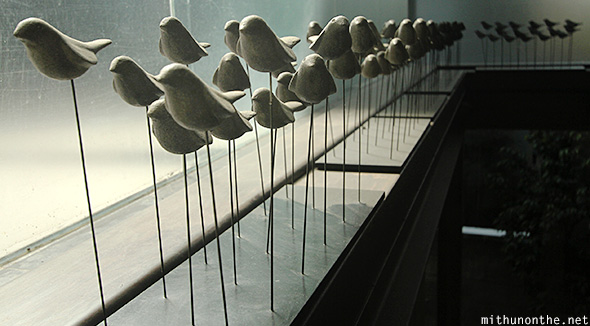
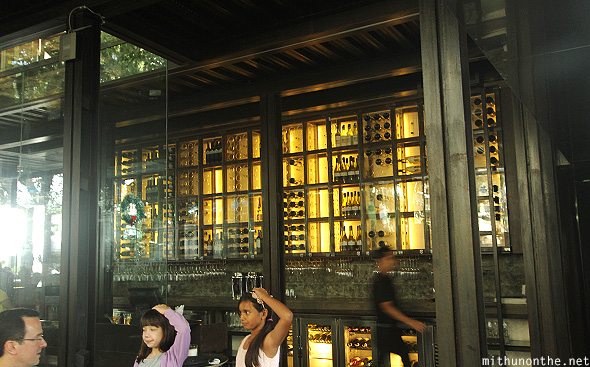

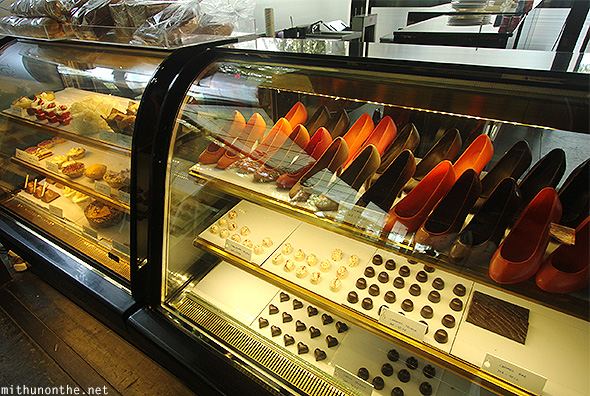
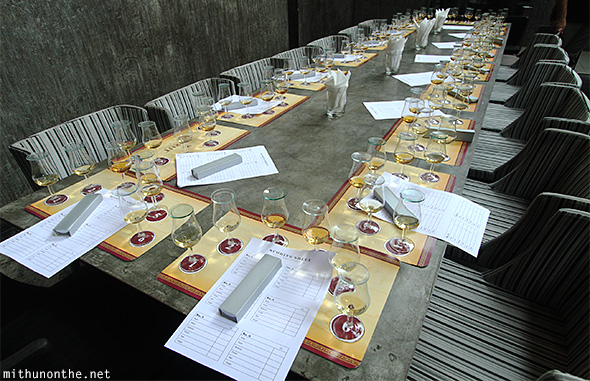
After an introduction by the organizers from Lywd, the folks from Amrut Distilleries were introduced to us. In 2010, Amrut’s Fusion single malt whisky was named “third best whisky in the world” by renowned whisky connoisseur Jim Murray in his 2010 edition of the ‘Whisky Bible’. A impressive recognition for an Indian brand, and for a nation that’s not really known for producing whisky, despite actually being one of the largest producers of whisky by the numbers.
In fact, Amrut didn’t really start out making premium whisky. Although the company has been around 1948, it wasn’t until the Chairman’s son, Rakshit Jagdale, who was doing his Masters in UK, decided to to sample the market there and investigate the potential of exporting Amrut Single Malt whisky to the UK.

Ashok explained to us the process of evaluating whiskys. On how to smell it, taste and how to pick up the various fragrance notes in a whisky’s taste. I never realized our nostrils pick up smells differently… until Ashok told us to smell the whisky using one nostril first, and then the other. For me, my right nostril sensed a stronger smell than my left nostril. What do you know, you learn something about your own body everyday!
On the scoring sheet, we had to describe how it smelt, how it tasted, the balance (as in, if one flavour was stronger than any other) and finish (how long the taste lasted on our tongues). Then we had to guess how aged the whisky was and whether it was Indian or foreign.
With the primary education over, we began tasting. We had 6 glasses in front of us, but guess what, they weren’t all Amrut whisky. They didn’t tell us which glasses contained Amrut whisky(s). Each blogger was given a score sheet where we had to note down our impressions of each whisky we sampled.
We would pause in between every whisky tasting to assess what flavours we got out of each sip. Here’s another thing to try out when you drink whisky. Take a whiff (smell) after pouring it into a glass. Now cover the glass top with your hands and keep it closed for a few minutes. Now remove your hand and smell the whisky. The smell was so much stronger than when I first smelled it. It just hits you!
After we had sampled all six glasses, it was now time to reveal which glass was which whisky.
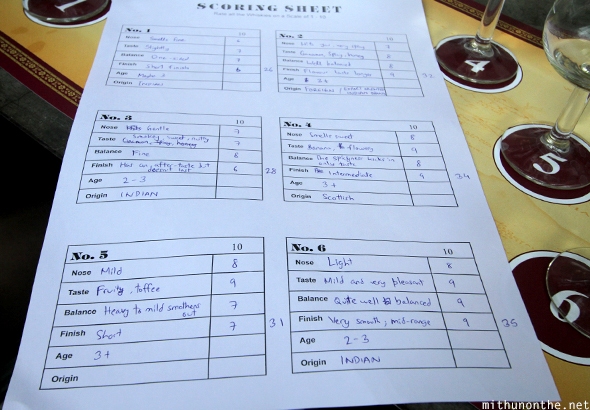
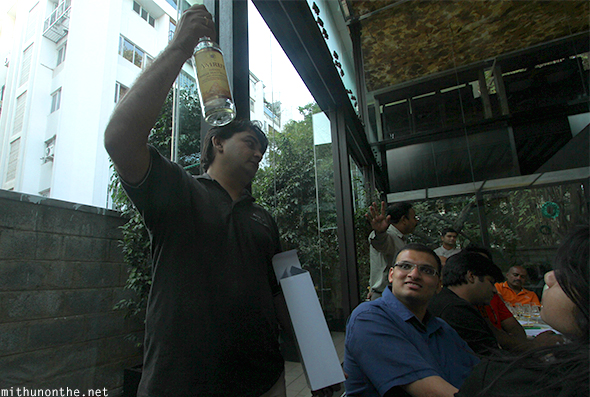
Whisky no. 6 was Amrut’s award winning Peated Indian Single Malt Whisky Cask Strength. Sadly, I ranked the Amrut’s Fusion Indian Single Malt Whisky (glass no. 3), my second lowest. Maybe it just wasn’t for me. The second highest score I gave was for whisky no. 4 — which turned out to be Jim Beam’s! Funny, considering I didn’t think much about Jim Beam’s when I first tried it a few years ago. The other whisky brands were Glenmorangie, Johnny Walker Black label and one other that I can’t recollect now. The fact that I chose Amrut’s Peated Single Malt over Johnny Walker Black label shows you just how good that whisky is.
Throughout the session Ashok, Rakshit and Vikram from Amrut Distilleries would tell us the challenges they faced when trying to convince the world that India could produce whisky that was very good. Most foreigners who tried Amrut couldn’t believe it when they were told what they were drinking was from Bangalore, India! And because of the climatic conditions, Amrut whiskys aren’t aged as long as Scotch.
India has always had its share of underdog stories. I guess Amrut’s Single Malt whisky story isn’t any different. Although Amrut was mostly export-oriented with its Single Malt whisky, it has recently, tried to get more bottles into Indian liquor stores and ramp up production to keep up with demand.
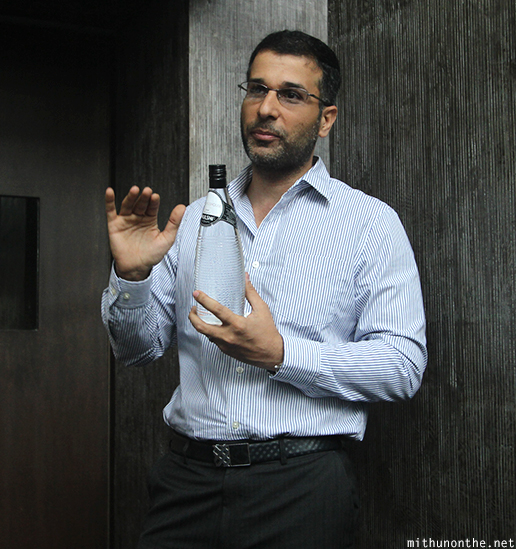
Rohinton spoke about the inspiration behind the design of The Glass House. Minimalism, if it wasn’t evident from the photos, was key. The entire structure is glass (duh), steel and concrete — and that includes the furniture.
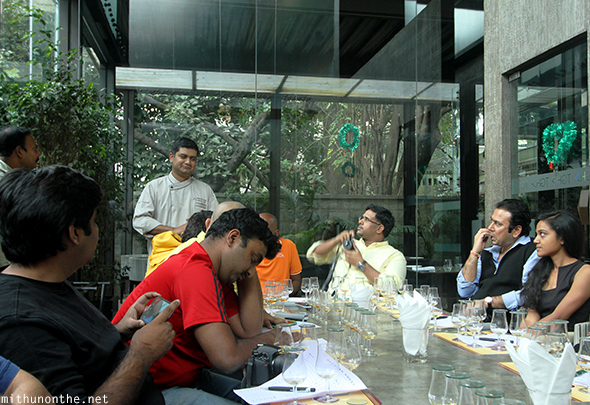
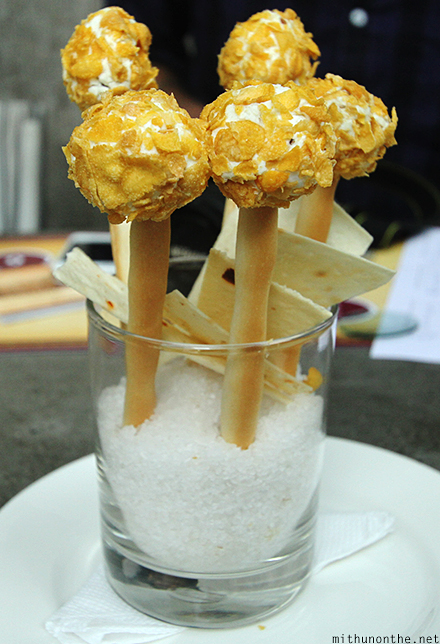
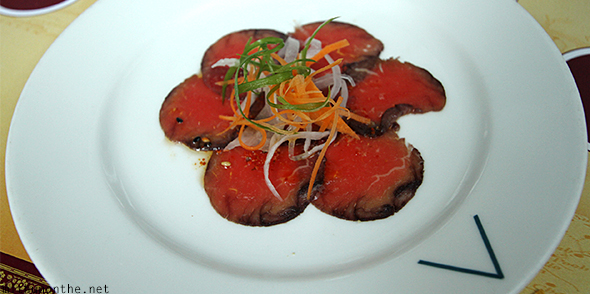
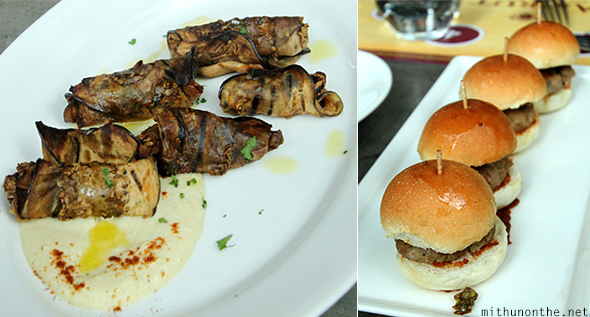
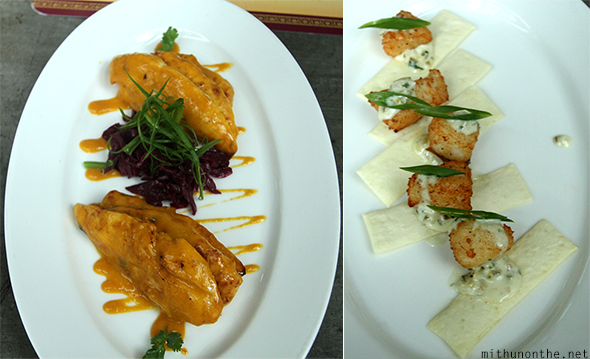

Like the design, the food on the menu is minimalistic too. The chef told us most dishes on the menu comprise of no more than 3-5 ingredients. All the breads and desserts are made in-house. The menu is largely European and the food is all very gourmet. Yes, The Glass House is a bit on the high end. Then again, given the location and if you couldn’t already tell from the looks of the place, you kind of expect that.
Coming back to Amrut whisky, I regret not taking a photo of the bottle. The thought never crossed my mind because when I saw that they were going to hand out bags to each blogger, I assumed the bags contained a bottle of Amrut whisky for us to take home. Turned out they were just Amrut branded whisky glasses. And by the time I thought of taking a photo of the open bottles they had, the whisky in it was all gone. Would have been nice if they displayed their entire range there for us to at least take photos.
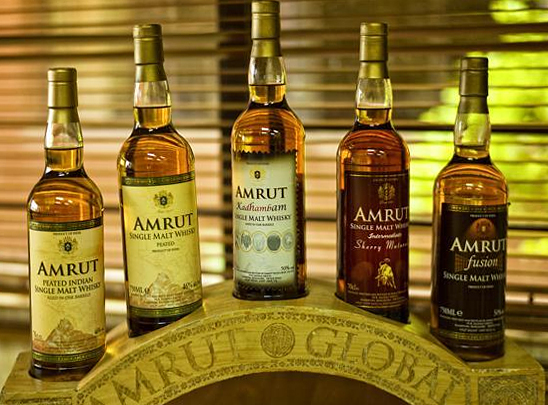
I also forgot to ask about pricing but they told me prices for Amrut whisky begin at Rs. 2200 and go up with each variant.
Now, I’m no whisky connoisseur, but I love the art of such things like the process of making whisky or beer. Appreciating the science behind the making whisky and its finer points was the bigger take away I had from this taste session by Amrut. I learned things like, it is caramel that is used to give whisky (and other spirits) its dark brown colour. And using caramel as a natural colouring is perfectly legal. Also, every distillery uses demineralized water to reduce the strength of alcohol.
Amrut Distilleries also organizes distillery tours at their facility off Mysore Road, which the company representatives described as “one amazing experience”. Hope I get to check it out one day.

